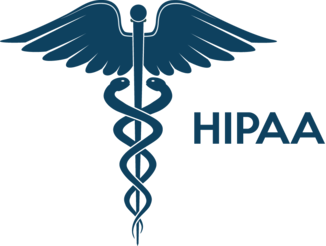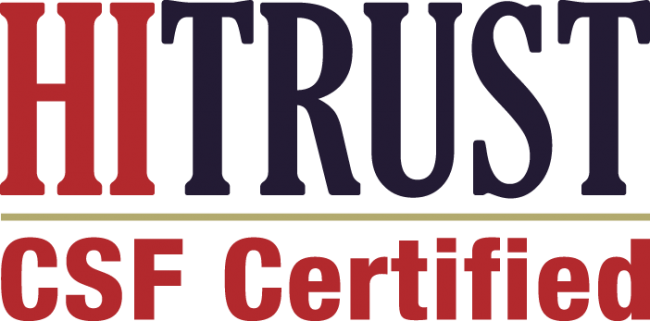On July 14, 2025, the Centers for Medicare & Medicaid Services (CMS) released its proposed rule for the Calendar Year (CY) 2026 Physician Fee Schedule (PFS), introducing significant policy changes that could reshape Medicare reimbursement for physicians, practitioners, and healthcare facilities. This comprehensive analysis examines the key provisions, financial implications, and potential long-term impacts of this proposed rule.
Executive Summary: Major Changes at a Glance
The 2026 proposed rule represents one of the most significant overhauls to Medicare physician payment in years, featuring:
- Dual conversion factors for the first time, separating payment rates for qualifying Alternative Payment Model (APM) participants from non-participants
- Conversion factor increases: 3.83% for APM participants and 3.62% for non-APM participants
- Efficiency adjustment: A controversial -2.5% reduction to work RVUs for non-time-based services
- Practice expense methodology changes that significantly favor office-based over facility-based settings
- Dramatic skin substitute payment reforms addressing a spending increase from $252 million in 2019 to over $10 billion in 2024
- Expanded telehealth policies and behavioral health integration services
- New transparency requirements for drug pricing and bona fide service fees
Part 1: Conversion Factor Updates and the New Dual Payment System
The Statutory Foundation
Beginning in 2026, Medicare law requires two separate conversion factors, a fundamental shift in how physicians are paid under Medicare. This bifurcation is designed to incentivize participation in Advanced APMs, which emphasize accountability for quality and cost of care.
The Numbers
For CY 2026, CMS proposes:
- Qualifying APM Conversion Factor: $33.59 (up $1.24 or 3.83% from the current $32.35)
- Nonqualifying APM Conversion Factor: $33.42 (up $1.17 or 3.62% from the current $32.35)
These increases incorporate three components:
- Statutory updates: +0.75% for APM participants vs. +0.25% for non-participants
- One-year increase: +2.50% mandated by statute for CY 2026
- Budget neutrality adjustment: +0.55% to account for changes in work RVUs
What This Means for Providers
The $0.17 difference between the two conversion factors may seem small, but over thousands of services, it creates a significant financial incentive for physicians to participate in Advanced APMs. A practice billing $1 million annually in Medicare services could see approximately $1,700 more in revenue by qualifying for APM status, a figure that will likely grow in subsequent years as the differential widens.
Part 2: The Controversial Efficiency Adjustment
The Rationale Behind the Cut
One of the most contentious provisions in the proposed rule is the efficiency adjustment, a -2.5% reduction to work RVUs for non-time-based services. CMS justifies this adjustment by pointing to research demonstrating that physician time estimates used in service valuation are systematically overinflated.
The Problem with Survey Data
CMS has historically relied on survey data from the AMA Relative Value Scale Update Committee (RUC) to estimate practitioner time, work intensity, and practice expenses. However, these surveys suffer from:
- Low response rates: Often below 10% for many specialties
- Selection bias: Respondents may have conflicts of interest since their responses influence their own payment rates
- Outdated assumptions: The data doesn’t reflect advances in medical technology, efficiency, or changes in clinical practice
- Limited review scope: Only a small portion of codes are revalued annually
Research cited by CMS shows that time assumptions built into PFS service valuation are “very likely overinflated.” By applying a five-year lookback of the Medicare Economic Index (MEI) productivity adjustment percentage, CMS arrived at the -2.5% efficiency adjustment for 2026.
Services Exempt from the Adjustment
Importantly, the efficiency adjustment will NOT apply to:
- Evaluation and management (E/M) services
- Care management services
- Behavioral health services
- Services on the Medicare Telehealth Services List
- Maternity codes with a global period designation of MMM
- Any time-based codes
This exemption structure protects primary care and behavioral health services while targeting procedural and diagnostic services that CMS believes have benefited from efficiency gains without corresponding payment reductions.
Long-Term Implications
CMS signals its intent to move away from survey data toward empiric studies of actual time spent on services. This shift could fundamentally alter how services are valued, potentially favoring specialties that can demonstrate efficiency through objective data while disadvantaging those whose work is harder to quantify.
Part 3: Practice Expense Methodology Overhaul
Rejecting Updated Survey Data
In a surprising move, CMS declined to implement updated practice expense data from the AMA’s 2024 Physician Practice Information (PPI) and Clinician Practice Information (CPI) surveys. Despite being the first comprehensive update since 2008, CMS cited multiple concerns:
- Small sample sizes and sampling variation
- Low response rates affecting representativeness
- Potential measurement error
- Incomplete data submission
The New Facility vs. Non-Facility Distinction
Instead, CMS proposes recognizing greater indirect costs for practitioners in office-based (non-facility) settings compared to facility settings. The rationale is straightforward: when the original allocation methodologies were established decades ago, most physicians maintained independent practices. Today, with the steady decline of private practice and corresponding rise in hospital employment, the assumption that facility-based physicians maintain separate practice locations no longer reflects reality.
For CY 2026, CMS proposes reducing facility practice expense RVUs allocated based on work RVUs to half the amount allocated to non-facility practice expense RVUs.
Using Hospital Data for Rate Setting
For the first time, CMS proposes using auditable hospital data from the Outpatient Prospective Payment System (OPPS) to set relative rates for certain technical services paid under the PFS. For 2026, this approach will apply to:
- Radiation treatment services
- Some remote monitoring services
CMS argues this approach promotes price transparency across settings, offers more predictable rate-setting outcomes, and reduces reliance on limited survey data.
Impact on Different Specialties
This methodology change creates clear winners and losers:
Winners: Office-based practitioners, primary care physicians, and specialties predominantly practicing in non-facility settings will see relative payment increases.
Losers: Hospital-employed specialists and those furnishing services primarily in facility settings (hospitals, ambulatory surgical centers) will face relative payment reductions as their practice expense RVUs are decreased.
Part 4: Addressing Skin Substitute Cost Explosion
The Spending Crisis
Perhaps the most dramatic proposal addresses skin substitutes, products used for wound care that have experienced unprecedented cost growth. According to Medicare claims data:
- 2019 spending: $252 million
- 2024 spending: Over $10 billion
- Increase: Nearly 40-fold in just five years
Most of this increase stems from manufacturers raising stated prices for specific products, taking advantage of the current payment methodology where each product receives a unique billing code and payment limit based on average sales price (ASP).
The Proposed Solution
For CY 2026, CMS proposes treating skin substitute products as incident-to supplies when used as part of covered application procedures. Products would be grouped and paid based on FDA regulatory status:
- 361 Human Cells, Tissues, and Cellular and Tissue-Based Products (HCT/P)
- Pre-Market Approvals (PMAs)
- 510(k) devices
For 2026, CMS proposes using a single payment rate reflecting the highest average of these three categories to avoid underestimating resources. In future years, payment rates would differentiate between the three FDA regulatory categories.
Expected Impact
This change would:
- Incentivize competition by removing product-specific pricing advantages
- Encourage innovation toward more cost-effective products
- Generate significant savings for the Medicare Trust Fund (exact estimates are not yet published)
- Apply consistently across physician office and hospital outpatient settings
Part 5: Telehealth and Virtual Supervision Policies
Streamlining the Telehealth Services List
CMS proposes simplifying how services are added to the Medicare Telehealth Services List by:
- Removing the distinction between “provisional” and “permanent” services
- Limiting review to whether services can be furnished using interactive, two-way audio-video telecommunications
- Permanently removing frequency limitations for subsequent inpatient visits, subsequent nursing facility visits, and critical care consultations
Virtual Direct Supervision
One of the most impactful proposals permanently adopts virtual direct supervision for services requiring physician oversight. Under this policy, direct supervision can be provided through real-time audio and visual interactive telecommunications (excluding audio-only) for:
- Incident-to services under § 410.26
- Diagnostic tests under § 410.32
- Pulmonary rehabilitation services under § 410.47
- Cardiac rehabilitation and intensive cardiac rehabilitation services under § 410.49
Exception: Services with global surgery indicators of 010 or 090 are excluded from virtual supervision provisions.
Teaching Physician Physical Presence
In a reversal of pandemic-era flexibilities, CMS proposes returning to pre-PHE policy requiring teaching physicians to maintain physical presence during critical portions of resident-furnished services in metropolitan statistical areas. The rural exception established in the 2021 final rule would remain.
This change reflects CMS’s belief that in-person supervision in teaching settings ensures quality and appropriate resident education, particularly in urban academic medical centers where resources are more readily available.
Part 6: Behavioral Health and Chronic Disease Management
The Chronic Disease Crisis
The proposed rule acknowledges that six in ten Americans have at least one chronic disease, with four in ten having multiple chronic conditions. Aligning with the Administration’s focus on the “Make America Healthy Again” initiative, CMS emphasizes prevention and management of chronic disease.
Advanced Primary Care Management (APCM) Add-On Codes
CMS proposes creating optional add-on codes for Advanced Primary Care Management services that facilitate complementary behavioral health integration (BHI) or psychiatric Collaborative Care Model (CoCM) services. Three new G-codes would be billable as add-on services when the APCM base code is reported by the same practitioner in the same month.
These services directly address the intersection of physical and behavioral health. Evidence shows that integrating behavioral health with primary care leads to:
- Reduced depression severity
- Enhanced overall patient experience of care
- Better management of physical chronic conditions
Digital Mental Health Treatment Expansion
CMS proposes expanding payment for digital mental health treatment (DMHT) devices to include treatment of Attention Deficit Hyperactivity Disorder (ADHD). Previously, DMHT policies covered devices for other behavioral health conditions when furnished incident to professional behavioral health services under a treatment plan.
The rule also solicits comments on establishing coding and payment policies for other digital therapy devices and broader digital tools used by practitioners as complements to mental health treatment plans.
Part 7: Drug Pricing Transparency and Reforms
Average Sales Price (ASP) Reforms
CMS proposes significant new guidance for calculating manufacturers’ average sales price, focusing on two key areas:
1. Bundled Arrangements and Price Concessions
CMS proposes defining “bundled arrangement” and providing clarity on how manufacturers should account for bundled price concessions when calculating ASP. The rule specifies circumstances where certain fees must be considered price concessions rather than separate charges.
2. Bona Fide Service Fees (BFSFs)
New regulations would:
- Specify methodologies for calculating fair market value in certain circumstances
- Require manufacturers to verify that BFSFs are not passed on to affiliates, clients, or customers
- Beginning January 2026, require certification letters from BFSF recipients confirming fees are not passed through
These changes aim to ensure ASP calculations accurately reflect true market prices, preventing manufacturers from gaming the system through creative fee arrangements.
Discarded Drug Refunds
By statute, manufacturers must pay Medicare refunds for discarded amounts of certain single-dose container or single-use package drugs. For CY 2026, CMS reviewed two applications for increased applicable percentages but is not proposing increases for either drug, signaling scrutiny of manufacturer requests to reduce refund obligations.
Autologous Cell-Based Immunotherapy and Gene Therapy
CMS proposes that preparatory procedures for tissue procurement required for manufacturing autologous cell-based immunotherapy or gene therapy be included in the product’s payment. Beginning January 1, 2026, any preparatory procedures paid for by the manufacturer must be included in ASP calculations.
This policy prevents double-payment scenarios and ensures Medicare isn’t separately paying for procedures that should be considered part of the therapy’s manufacturing cost.
Part 8: Rural Health Clinics and FQHCs
Aligned Payment Policies
CMS proposes adopting the optional APCM add-on codes for Rural Health Clinics (RHCs) and Federally Qualified Health Centers (FQHCs) when they provide advanced primary care with BHI and CoCM services.
Care Coordination Services
The rule proposes adopting services established and paid under the PFS and designated as care management services as care coordination services for separate RHC and FQHC payment. This alignment improves transparency and predictability across settings.
Virtual Supervision and Telehealth
For RHC and FQHC services requiring direct supervision, the rule proposes permanently allowing supervision through real-time audio-visual telecommunications (excluding audio-only).
For non-behavioral health visits via telecommunication technology, RHCs and FQHCs could bill using HCPCS code G2025, including services furnished using audio-only communications technology through December 31, 2026.
Part 9: Medicare Shared Savings Program Modifications
Accelerated Transition to Two-Sided Risk
CMS proposes reducing the maximum time an Accountable Care Organization (ACO) can participate in a one-sided model (upside-only risk) of the BASIC track from seven to five performance years during the ACO’s first agreement period.
This change accelerates the transition to two-sided risk models where ACOs can earn shared savings but also face potential losses—a structure CMS believes better aligns incentives for cost containment and quality improvement.
Quality Scoring Simplification
The rule proposes removing certain health equity scoring factors and further simplifying quality scoring methodology. CMS also proposes revising terminology used to describe the health equity adjustment to accurately reflect data used in performance years 2023 and 2024.
Part 10: Inflation Rebate Program Updates
Claims-Based Methodology for 340B
Under the Inflation Reduction Act’s Medicare Prescription Drug Inflation Rebate Program, CMS proposes establishing a claims-based methodology to remove 340B units from Part D rebate calculations starting January 1, 2026.
The 340B Drug Pricing Program allows eligible safety-net providers to purchase medications at discounted prices. Removing these units from inflation rebate calculations ensures manufacturers aren’t penalized for price increases on drugs sold through this program, which already reflect steep discounts.
340B Repository
CMS proposes establishing a Medicare Part D Claims Data 340B Repository for voluntary submissions by covered entities for Part D claims with dates of service on or after January 1, 2026. This repository will support usability testing and improve data accuracy for distinguishing 340B claims from commercial claims.
Financial Impact Analysis
Overall Budget Impact
While CMS has not yet released complete budget impact estimates, preliminary modeling suggests:
- Skin substitute reforms: Multi-billion dollar savings to the Medicare Trust Fund
- Practice expense methodology changes: Redistributive effect, shifting approximately $2-3 billion from facility-based to office-based settings
- Efficiency adjustment: Approximately $1.5 billion reduction in specialty service payments
- Conversion factor increases: Approximately $2-3 billion increase in total PFS spending
The net effect on the Medicare Trust Fund will depend on final policy decisions and utilization patterns.
Specialty-Specific Impacts
Winners:
- Primary care physicians (protected from efficiency adjustment, benefit from APCM codes)
- Office-based specialists (practice expense methodology favors non-facility settings)
- Behavioral health providers (expanded integration services and DMHT coverage)
- APM participants (higher conversion factor differential)
Losers:
- Hospital-employed specialists (reduced facility practice expense RVUs)
- Procedural specialists (efficiency adjustment reduces work RVUs)
- Skin substitute manufacturers and affiliated providers (dramatic payment reductions)
- Non-APM participants (lower conversion factor growth)
Implementation Timeline and Next Steps
Key Dates
- July 14, 2025: Proposed rule published
- September 12, 2025: Public comment deadline
- November 2025 (estimated): Final rule publication
- January 1, 2026: Effective date for most provisions
What Stakeholders Should Do
Physicians and Practitioners:
- Analyze the impact on your specific specialty and practice setting
- Submit detailed comments by September 12, 2025
- Consider APM participation to benefit from higher conversion factors
- Prepare practice management systems for dual conversion factor coding
Hospitals and Health Systems:
- Model the financial impact of practice expense methodology changes
- Evaluate skin substitute utilization and develop alternative protocols
- Review physician employment agreements considering the facility vs. non-facility payment differential
- Advocate through national associations if significantly affected
Patient Advocates:
- Comment on access implications, particularly for specialty services
- Monitor behavioral health integration implementation
- Ensure chronic disease management enhancements benefit underserved populations
Payers and ACOs:
- Prepare for accelerated BASIC track transitions
- Implement systems to track and report APM participation status
- Develop strategies for beneficiary attribution under revised methodologies
Long-Term Implications: Looking Beyond 2026
The Future of Physician Payment
The 2026 proposed rule signals several long-term trends:
1. Continued APM Incentivization
The conversion factor differential will likely widen in future years, creating stronger financial incentives for APM participation. By 2030, the differential could exceed $2-3 per service, making non-APM participation financially untenable for many practices.
2. Data-Driven Valuation
CMS’s stated preference for empiric studies over survey data represents a fundamental shift. Expect increasing use of electronic health record data, claims analysis, and time-motion studies to value services—potentially disrupting traditional RUC processes.
3. Setting-Neutral Payment Pressure
The practice expense methodology changes reflect broader pressure toward setting-neutral payment policies. While this rule creates advantages for office-based settings, future rules may further harmonize payment across settings to reduce incentives for service migration to higher-cost locations.
4. Value-Based Specialty Care
The efficiency adjustment and APM incentives push specialty care toward value-based models. Specialties will need to develop quality metrics, demonstrate efficiency gains, and participate in episode-based payment models to maintain revenue.
5. Integrated Care Models
APCM codes and behavioral health integration provisions preview a future where Medicare preferentially pays for coordinated, team-based care over fragmented, single-provider services. Expect expansion of payment for care coordinators, navigators, and interdisciplinary team members.
Technology and Innovation
Digital Health Integration
The expansion of DMHT coverage for ADHD is just the beginning. CMS’s request for comments on other digital therapy devices suggests forthcoming policies for:
- Remote patient monitoring devices
- Artificial intelligence clinical decision support tools
- Virtual reality therapy applications
- Wearable sensors for chronic disease management
Telehealth Evolution
While some pandemic flexibilities are ending (teaching physician physical presence), others are becoming permanent (virtual direct supervision). The future likely includes:
- Expanded telehealth services for chronic disease management
- Hybrid care models combining in-person and virtual visits
- Audio-only coverage for specific populations and situations
- Interstate licensure solutions for telehealth providers
Workforce and Access Implications
Specialty Distribution
The combination of efficiency adjustments, practice expense changes, and APM incentives may influence specialty choice among medical students and residents. Procedural specialties facing payment pressures may become less attractive unless they can demonstrate high efficiency and quality.
Geographic Access
Rural and underserved areas could benefit from:
- Virtual supervision flexibilities enabling broader service availability
- Telehealth expansions reducing travel burdens
- RHC and FQHC payment enhancements
- APM opportunities for rural providers
However, specialty access may decline if hospital-employed specialists in rural facilities face significant payment reductions.
Behavioral Health Workforce
Enhanced payment for behavioral health integration should improve workforce distribution, enabling more psychologists, clinical social workers, and psychiatric nurse practitioners to work in integrated primary care settings.
Controversies and Criticisms
Stakeholder Concerns
Specialty Societies
Surgical and procedural specialty societies have already criticized the efficiency adjustment as arbitrary and unfairly penalizing technical expertise. The -2.5% reduction assumes efficiency gains without specialty-specific evidence, potentially reducing payment for services that haven’t actually become more efficient.
Teaching Hospitals
Academic medical centers oppose reverting to in-person teaching physician requirements, arguing that pandemic experience demonstrated virtual supervision’s effectiveness. They contend the change will reduce teaching efficiency without improving quality or safety.
Rural Hospitals
While RHCs receive some enhancements, Critical Access Hospitals and small rural hospitals face significant challenges from practice expense methodology changes. With limited ability to shift to non-facility billing, they risk substantial revenue losses.
Skin Substitute Manufacturers
Industry groups argue the dramatic payment reduction will limit patient access to advanced wound care products, particularly for diabetic ulcers and complex wounds. They contend CMS’s grouping approach fails to recognize clinical differences between products.
Policy Questions
Is the Efficiency Adjustment Evidence-Based?
Critics question whether the five-year MEI productivity adjustment appropriately measures specialty-specific efficiency gains. CMS has not provided detailed, specialty-by-specialty evidence supporting the -2.5% reduction.
Does the Practice Expense Methodology Create New Distortions?
By favoring non-facility settings, CMS may incentivize service migration to physician offices that lack the infrastructure and support services available in hospitals—potentially affecting quality and safety for complex patients.
Are Skin Substitute Savings Real?
While the spending growth is indisputable, some question whether grouping products by FDA regulatory status adequately accounts for clinical effectiveness differences. If providers substitute lower-quality products, Medicare could face higher costs for treating wound complications.
Recommendations for Stakeholders
For Physicians and Group Practices
- Model Your Specific Impact: Use CMS’s proposed RVU files to calculate how the efficiency adjustment and practice expense changes affect your specific service mix.
- Evaluate APM Participation: With the conversion factor differential beginning at $0.17 and likely growing, carefully analyze whether APM participation benefits your practice.
- Review Billing Patterns: Ensure you’re correctly billing facility vs. non-facility codes, as the payment differential will expand significantly.
- Invest in Care Coordination: APCM and behavioral health integration codes offer new revenue opportunities for practices that can implement team-based care models.
- Submit Detailed Comments: Generic opposition is less effective than specific data showing how proposals affect your patient population and practice viability.
For Hospitals and Health Systems
- Develop Physician Office Strategies: Consider opportunities to shift appropriate services to hospital-owned physician office settings to benefit from higher non-facility payment rates.
- Renegotiate Skin Substitute Contracts: With dramatic payment reductions coming, evaluate alternative products and renegotiate supply agreements.
- Enhance Employed Physician Productivity: The efficiency adjustment and practice expense changes may require employed physicians to see more patients or perform more services to maintain revenue levels.
- Advocate for Teaching Hospital Flexibility: Submit comments with data demonstrating virtual supervision’s effectiveness during the pandemic.
- Prepare for Medicare Advantage Impact: Medicare Advantage plans typically benchmark to fee-for-service rates, so these changes will ripple through MA contracting.
For Patients and Advocates
- Monitor Access to Specialty Services: Watch for evidence that payment reductions lead to reduced specialty availability, longer wait times, or service migration to less convenient settings.
- Advocate for Behavioral Health Integration: Support policies enhancing behavioral health access, but ensure implementation includes workforce development to meet expanded demand.
- Protect Safety-Net Providers: Submit comments ensuring that payment changes don’t disproportionately harm providers serving vulnerable populations.
- Question Skin Substitute Changes: If you or family members have experienced effective wound care using specific products, share that information with CMS to inform their clinical understanding.
For Policymakers
- Require Comprehensive Impact Analysis: Before finalizing, CMS should publish detailed, specialty-by-specialty modeling showing the combined effect of all proposed changes.
- Consider Transition Periods: Dramatic changes like the efficiency adjustment might benefit from phased implementation to allow practices to adapt.
- Monitor Unintended Consequences: Establish monitoring mechanisms to quickly identify and address access problems or quality issues resulting from payment changes.
- Align with Broader Reform: Ensure PFS changes align with other Medicare initiatives like the Medicare Shared Savings Program, bundled payments, and the Medicare Advantage program.
Conclusion: A Pivotal Moment for Medicare Payment
The 2026 Physician Fee Schedule proposed rule represents one of the most consequential changes to Medicare physician payment in decades. The introduction of dual conversion factors, the controversial efficiency adjustment, fundamental practice expense methodology changes, and dramatic skin substitute payment reforms collectively reshape the financial landscape for physician practices, hospitals, and Medicare beneficiaries.
For primary care and office-based practices, especially those participating in APMs, the rule offers financial advantages and new care coordination revenue opportunities. For procedural specialists and hospital-employed physicians, the rule presents significant challenges requiring strategic adaptation.
Beyond the immediate financial impacts, the rule signals CMS’s long-term vision: value-based payment models, integrated care delivery, reduced reliance on subjective survey data, and enhanced transparency in drug pricing and device costs. The efficiency adjustment, while controversial, reflects a determination to align payments with actual resource use rather than potentially inflated historical assumptions.
As stakeholders submit comments through September 12, 2025, the final rule’s shape remains uncertain. CMS may modify, delay, or eliminate controversial provisions based on the feedback received. However, the directional signals are clear: Medicare is moving toward APMs, integrated care, data-driven valuation, and enhanced accountability for quality and cost.
Providers, hospitals, patients, and policymakers must engage actively in the comment process to ensure the final rule achieves CMS’s goals of better quality, efficiency, empowerment, and innovation while maintaining access to high-quality care for all Medicare beneficiaries. The decisions made in the coming months will shape American healthcare delivery for years to come.
Additional Resources
- CMS Fact Sheet: cms.gov/newsroom/fact-sheets/calendar-year-cy-2026-medicare-physician-fee-schedule-pfs-proposed-rule-cms-1832-p
- Federal Register: federalregister.gov
- Comment Submission: regulations.gov (Search for CMS-1832-P)
- Regulatory Relief RFI: cms.gov/medicare-regulatory-relief-rfi
This analysis is based on the proposed rule published July 14, 2025. Final policies may differ significantly based on public comments and CMS’s further consideration. Healthcare providers should consult with legal and financial advisors when evaluating the impact of these proposals on their specific situations.








